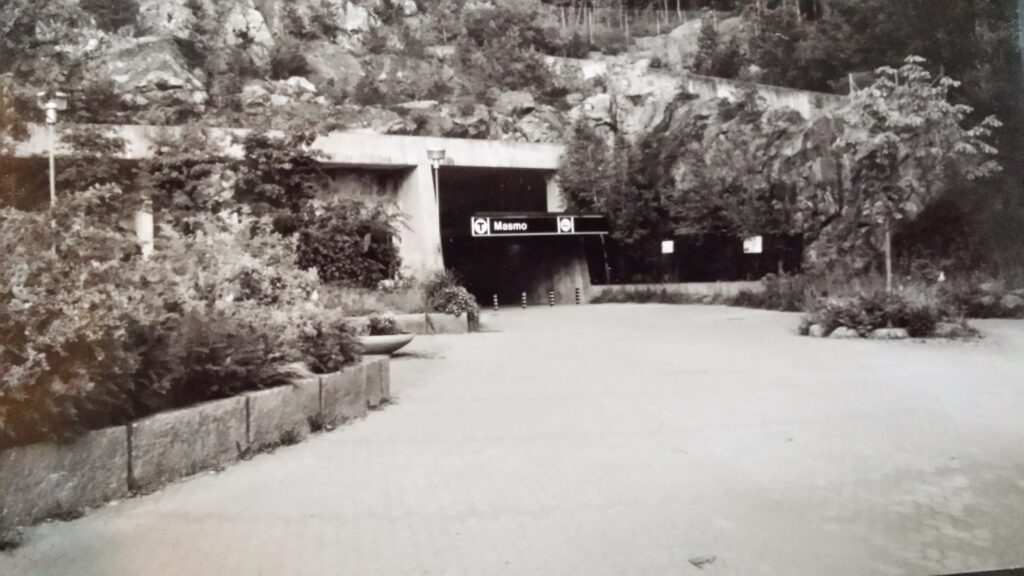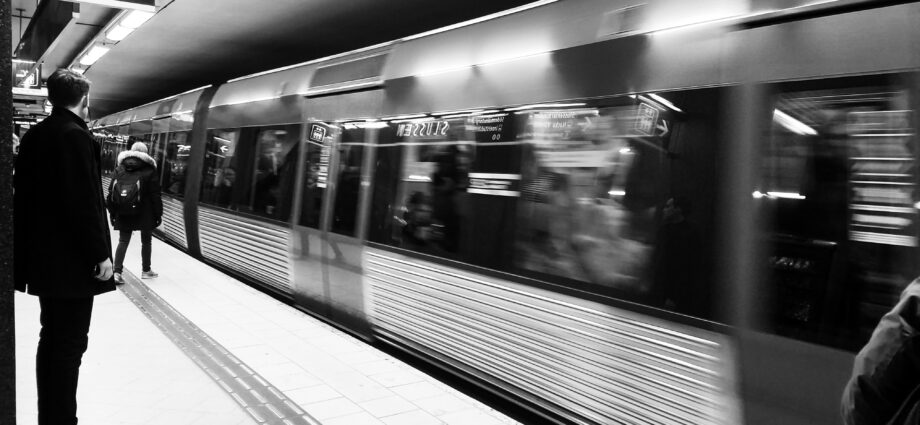I photographed the below entrance to the Masmo subway station in 2001.
I had recently begun studying at KTH Royal Institute of Technology and found my first apartment in the region in this suburban district south of Stockholm (part of Huddinge Municipality).

The commute to university was about 45 minutes and it was, for me, a seamless lifestyle shift to begin using public transit regularly.
I hadn’t lived a walkable lifestyle much prior to this (aside from several months in Seattle before I made the move to Sweden). I had my first car at age 16 and had lived a car-dependent lifestyle through much of my upbringing.
Many people in this suburban district had cars. No doubt several of them even drove distances far shorter than my 45 minute to 1 hour commute to university.
For me, getting a car in this new chapter of my life was unthinkable. Not only could I not afford it but I also liked my new lifestyle way too much. The long commute gave me the opportunity to read at length while in transit, work on text for my projects or simply do nothing and enjoy a coffee en route.
The reason I love to talk about mobility choice is that even when given efficient and quality public transit infrastructure, many people will not choose to use it- whether due to values associated with car-dependency (such as the privacy and autonomy that automobiles provide) or simply being hesitant about what a modal shift will require of them.

I went on, months after this, to living very centrally in Stockholm city, allowing me to walk even more. 20 years later I returned to the region to live with my husband and children and had the opportunity to observe my husband become a public transit convert himself for a good part of the time we lived in Swedish cities.
Mobility choices are not only made due to access, convenience, comfort and quality of the infrastructure- as critical as those aspects are. There is also often a value system attached to why we choose certain forms of mobility (or don’t).
This is the juicy part where municipalities and advocacy organizations can help make (for example) public transit or walkable networks more enticing – but people will still, individually, need to also experience the mental shift of being open to changing modes.
Sometimes it is seamless and welcome change (as I experienced 2 decades ago) and many others much more tense and oppositional.
With my content and work at here at pedestrianspace.org, I’m interested in the whole range- in fact the tense and oppositional area of the spectrum is where great change can potentially occur.
-Annika, Editor & Founder at Pedestrian Space
Cover Photo: Slussen subway station, Annika Lundkvist (2017)

